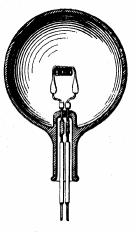Yesterday The Washington Free Beacon reported that the Environmental Protection Agency (EPA) is spending $300,000 to develop technology that they believe will save energy in office buildings.
The article reports:
The Environmental Protection Agency is spending nearly $300,000 to develop technology that will track the energy and water use of office buildings, with a colored light bulb system that will send “visual messages” to employees when they are using too much.
Lucid Design Group, a California-based software company, received the funding from the agency with the goal to “change the habits” of Americans at work.
First of all, note that the EPA is saying they are tracking the energy use of buildings–not people. That is supposed to make the idea more acceptable. The idea of paying the government to change my habits just does not sit well with me.
The article further reports:
The funding went towards the development of “Building Orbs” to “encourage behavior-based energy conservation in commercial buildings.”
“Building Orbs” are a system of light bulbs that change color when energy use is too high.
“The project team, which includes original members of the Oberlin College P3 (People, Prosperity and the Planet) team, will begin by completing development of and testing novel, low-cost software tools that allows off-the-shelf, multi-colored, internet-connect LEDs such as the Philips Hue and the LIFX to be transformed into ‘Building Orbs,’” according to the grant for the project.
The system will provide “ambient color-based feedback to building occupants,” and use “visual messaging.”
The “Building Orbs” will “tap the demand response potential of behavior-driven electric loads through visual messaging during demand response events,” and try to get office workers to reduce their electricity use through “visual messaging by enabling behavior-based peak demand management.”
The company has now received $395,091 for the technology including the latest $295,507 grant.
Let’s look at this for a minute. How much control does the average office worker have over his individual energy use? The company involved sets the heating or cooling to a temperature that is most acceptable for all employees. Is the machine going to complain about energy use during hot or cold spells? Computers and printers generally have sleep modes that shut down when not in use. Generally, a computer is not using much more energy than a light bulb. Speaking of light bulbs… Do energy saving policies encourage the use of Compact Fluorescent Bulbs (CFL’s)? These bulbs have health risks while in use and when they break.
This expenditure is a colossal waste of taxpayer money. Most companies monitor their energy consumption in order to cut down on overhead. Government intrusion is neither necessary nor welcome in telling offices how to use energy.




